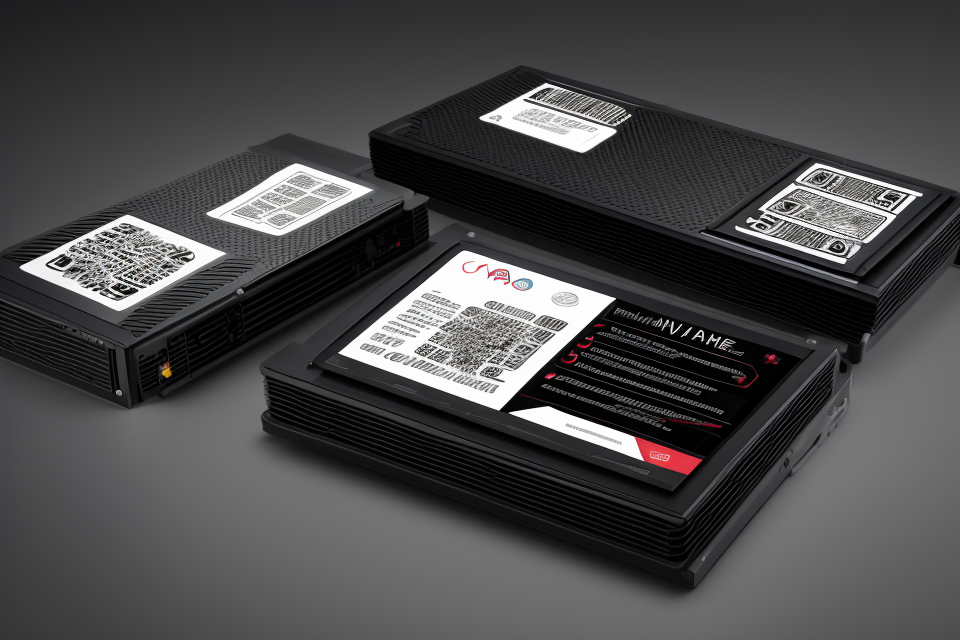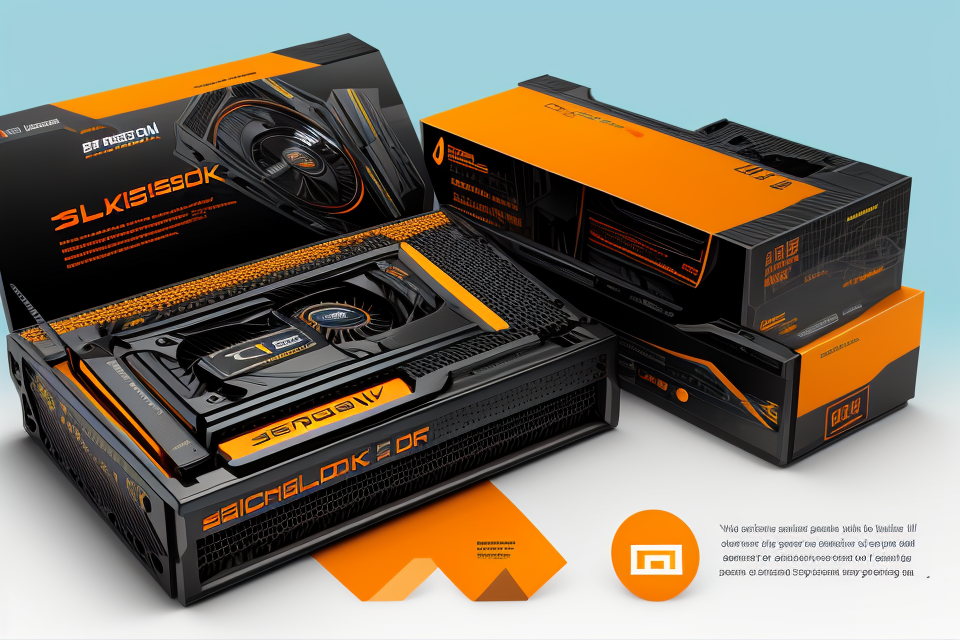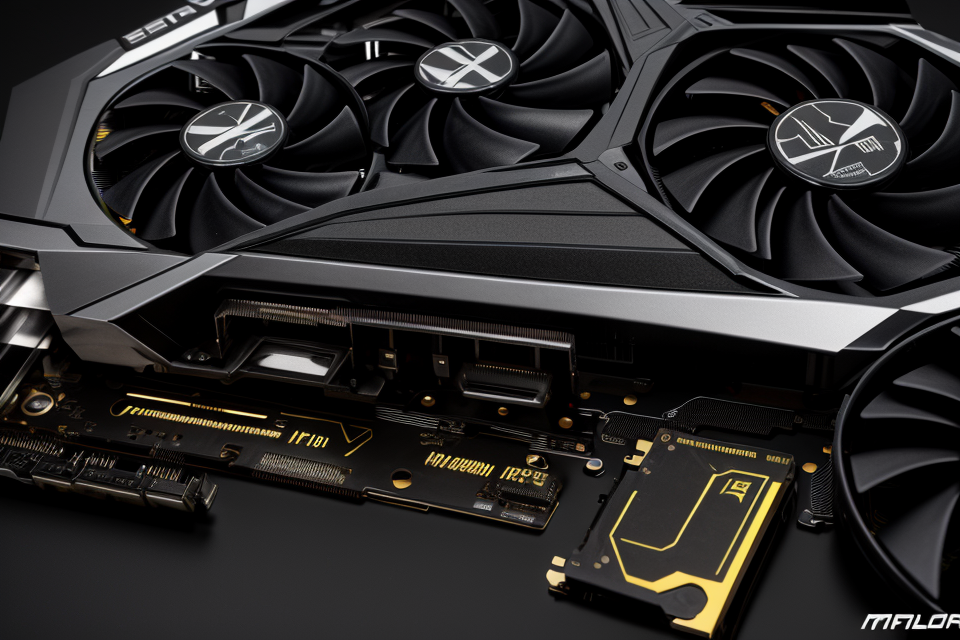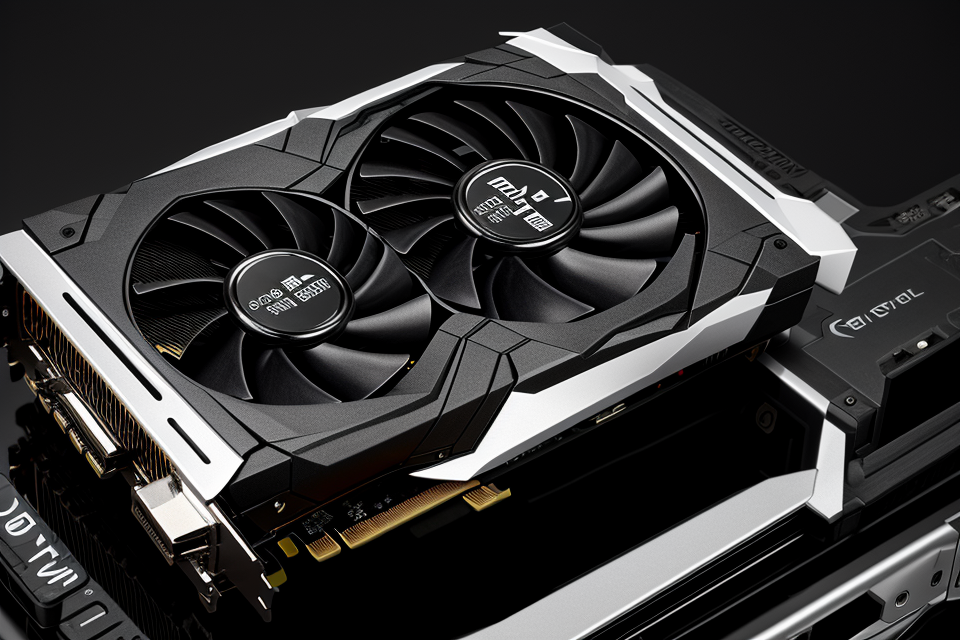
The world of graphics cards is a fast-paced and ever-evolving one, with new versions and models being released on a regular basis. With so many options available, it can be difficult to determine which version of graphics card reigns supreme. In this comprehensive comparison, we will explore the key differences between various versions of graphics cards, including the latest and greatest models on the market. Whether you’re a seasoned gamer or a first-time buyer, this guide will help you make an informed decision when it comes to choosing the best graphics card for your needs. So, let’s dive in and explore the world of graphics cards!
Understanding Graphics Cards
The Basics of Graphics Cards
A graphics card, also known as a display card or video card, is an electronic circuit that is used to generate and output images to a display device. It is an essential component of a computer system, particularly for tasks that require high-quality graphics rendering, such as gaming, video editing, and 3D modeling.
Definition of graphics cards
Graphics cards are add-in cards that can be installed in a computer’s motherboard expansion slot. They are designed to offload the graphics processing workload from the CPU, thereby improving the overall performance of the system. Graphics cards come in different sizes, shapes, and performance levels, making them suitable for a wide range of applications.
Importance of graphics cards
Graphics cards are crucial for tasks that require high-quality graphics rendering. They are particularly important for gamers, video editors, and 3D modelers who require fast and efficient graphics processing. Graphics cards can also help improve the overall performance of a computer system by offloading the graphics processing workload from the CPU.
Key components of graphics cards
The key components of a graphics card include the GPU (graphics processing unit), memory, display connectors, and power supply. The GPU is the main processing unit responsible for rendering images and videos. Memory is used to store the data that is being processed by the GPU. Display connectors are used to connect the graphics card to the display device. Power supply is used to provide power to the graphics card, which can require a significant amount of power, particularly for high-performance cards.
Different Types of Graphics Cards
Graphics cards, also known as video cards or display adapters, are electronic components that control the display of visual output on a computer screen. They are responsible for rendering images and animations, and can greatly impact the overall performance of a computer.
There are two main types of graphics cards: integrated and dedicated.
- Integrated graphics cards are built into the motherboard of a computer and share system memory with the CPU. They are less powerful than dedicated graphics cards but are more cost-effective and use less power. They are suitable for basic tasks such as web browsing and video playback, but may not be able to handle more demanding tasks such as gaming or video editing.
- Dedicated graphics cards are separate components that are installed in a PCIe slot on the motherboard. They have their own memory and are more powerful than integrated graphics cards, making them better suited for demanding tasks such as gaming, video editing, and 3D modeling. They also require more power and can be more expensive than integrated graphics cards.
There are several types of dedicated graphics cards, including:
- Desktop graphics cards are designed for use in desktop computers and are typically more powerful than laptop graphics cards. They are suitable for gaming, video editing, and other demanding tasks.
- Laptop graphics cards are designed for use in laptops and are typically less powerful than desktop graphics cards. They are suitable for basic tasks such as web browsing and video playback, but may not be able to handle more demanding tasks such as gaming or video editing.
- Mobile graphics cards are designed for use in smartphones and tablets. They are less powerful than desktop or laptop graphics cards, but are more power-efficient and can handle basic tasks such as web browsing and video playback.
- Workstation graphics cards are designed for use in high-performance workstations and are optimized for tasks such as 3D modeling, engineering, and scientific simulations. They are typically more powerful than desktop or laptop graphics cards and have specialized features such as support for multiple displays and high-speed memory.
Each type of graphics card has its own strengths and weaknesses, and the choice of which one to use depends on the specific needs and requirements of the user.
Comparing Graphics Card Versions
Generations of Graphics Cards
The evolution of graphics cards has been a continuous process, with each generation offering improved performance and features over the previous one. In this section, we will explore the different generations of graphics cards and their unique characteristics.
First generation graphics cards
The first generation of graphics cards, also known as 2D graphics cards, were introduced in the late 1980s and early 1990s. These cards were designed primarily for computer graphics and were used to create high-quality images and animations. They were also used in video games to improve the graphics and performance of the games. Some of the popular first-generation graphics cards include the 3dfx Voodoo and the Matrox Mystique.
Second generation graphics cards
The second generation of graphics cards, also known as 3D graphics cards, were introduced in the mid-1990s. These cards were designed to provide 3D graphics capabilities and were used in the gaming industry to create more realistic and immersive games. Some of the popular second-generation graphics cards include the Nvidia GeForce and the ATI Radeon.
Third generation graphics cards
The third generation of graphics cards, also known as mainstream graphics cards, were introduced in the early 2000s. These cards offered improved performance and features over the previous generation, including higher resolutions, more advanced shaders, and improved texturing capabilities. Some of the popular third-generation graphics cards include the Nvidia GeForce 6800 and the ATI Radeon 9800.
Current generation graphics cards
The current generation of graphics cards, also known as high-end graphics cards, offer the most advanced performance and features. These cards are designed for use in gaming, professional visualization, and other demanding applications. They offer advanced features such as real-time ray tracing, AI acceleration, and support for virtual reality. Some of the popular current-generation graphics cards include the Nvidia GeForce RTX and the AMD Radeon RX.
Overall, each generation of graphics cards has brought significant improvements in performance and capabilities, making them more suitable for various applications.
Features of Different Graphics Card Versions
When comparing different versions of graphics cards, there are several key features to consider. These include:
- CUDA cores: CUDA (Compute Unified Device Architecture) cores are the processing units found within a graphics card that perform calculations and render images. The number of CUDA cores a graphics card has directly impacts its performance.
- VRAM: VRAM (Video Random Access Memory) is the memory that a graphics card uses to store and manipulate visual data. The amount of VRAM a graphics card has determines how much data it can handle at once, which is important for rendering complex scenes.
- Memory bandwidth: Memory bandwidth refers to the speed at which a graphics card can access its VRAM. Higher memory bandwidth means that the graphics card can transfer data more quickly, which can improve performance.
- Power consumption: The power consumption of a graphics card is an important consideration, as it affects both the performance and the cooling requirements of the card. Higher-performance graphics cards typically consume more power.
- Price: The price of a graphics card is also an important factor to consider, as it can greatly impact the overall cost of a system. Some high-end graphics cards can be quite expensive, while others may be more budget-friendly.
Choosing the Right Graphics Card Version for Your Needs
Factors to Consider
When it comes to choosing the right graphics card version for your needs, there are several factors that you should consider. Here are some of the most important ones:
Budget
One of the most important factors to consider when choosing a graphics card is your budget. Graphics cards can vary widely in price, from relatively affordable options to high-end models that can cost thousands of dollars. Before you start shopping, it’s important to set a budget and stick to it. This will help you narrow down your options and ensure that you get a card that fits your needs and your budget.
Gaming needs
If you’re a serious gamer, then you’ll want to choose a graphics card that can handle the most demanding games. Some of the most popular games, such as Fortnite and Call of Duty, require a lot of processing power and memory, so you’ll want to choose a card that can deliver the performance you need. Look for a card with a high frame rate and a fast refresh rate, as well as a large amount of video memory.
Graphic design needs
If you’re a graphic designer, then you’ll want to choose a graphics card that can handle demanding software such as Adobe Photoshop and Illustrator. Look for a card with a high number of CUDA cores, which can help speed up rendering times and improve performance. You’ll also want to choose a card with a large amount of memory, as this will allow you to work with larger files and more complex designs.
Workstation needs
If you use your computer for professional work such as video editing or 3D modeling, then you’ll want to choose a graphics card that can handle demanding workstation applications. Look for a card with a high number of CUDA cores and a large amount of memory, as well as a fast memory bandwidth. You may also want to consider a card with ECC memory, which can help prevent data corruption and ensure that your work is accurate.
Recommendations
Budget Graphics Cards
For those on a tight budget, there are several options for graphics cards that offer decent performance at an affordable price. Some popular choices include the Nvidia GTX 1660 Super and the AMD Radeon RX 580. These cards are capable of handling most games at 1080p resolution, but may struggle with demanding AAA titles or high-resolution gaming.
Mid-range Graphics Cards
For those looking for a balance between performance and cost, mid-range graphics cards are a great option. Popular choices in this category include the Nvidia GTX 1660 Ti and the AMD Radeon RX 5700 XT. These cards offer improved performance over budget options, and can handle most games at 1440p resolution with good settings.
High-end Graphics Cards
For those who demand the best performance, high-end graphics cards are the way to go. Popular choices in this category include the Nvidia GeForce RTX 3080 and the AMD Radeon RX 6800 XT. These cards offer incredible performance, capable of handling even the most demanding AAA titles at high-resolution settings. However, they come with a steep price tag, and may not be necessary for all users.
Overall, the choice of graphics card will depend on the individual’s needs and budget. Budget options are ideal for casual gamers or those on a tight budget, mid-range options offer a balance of performance and cost, and high-end options offer the best performance but come at a premium price.
FAQs
1. What is a graphics card and why is it important?
A graphics card, also known as a video card or display card, is a hardware component that is responsible for rendering images and videos on a computer screen. It is important because it helps to improve the overall performance of a computer, particularly when it comes to tasks that require intensive graphics processing, such as gaming, video editing, and 3D modeling.
2. What are the different types of graphics cards?
There are several types of graphics cards, including integrated graphics cards, which are built into the motherboard and use system memory to render images, and discrete graphics cards, which are standalone cards that have their own memory and processing power. Discrete graphics cards can be further divided into mobile graphics cards, which are designed for laptops, and desktop graphics cards, which are designed for use in desktop computers.
3. What factors should I consider when choosing a graphics card?
When choosing a graphics card, there are several factors to consider, including the intended use of the computer, the budget, and the compatibility with the motherboard and power supply. It is also important to consider the performance of the graphics card, which can be measured in terms of its processing power, memory, and number of cores.
4. What are some of the most popular graphics card brands?
Some of the most popular graphics card brands include NVIDIA, AMD, and Intel. NVIDIA is known for its high-performance graphics cards, while AMD is known for its more affordable options. Intel is a newer player in the market, but has been gaining popularity in recent years.
5. How do I know which version of a graphics card is best for me?
The best version of a graphics card for you will depend on your specific needs and budget. It is important to consider the intended use of the computer, as well as the compatibility with the motherboard and power supply. You may also want to consider the performance of the graphics card, as well as the brand and price. It is always a good idea to do research and read reviews before making a purchase.


